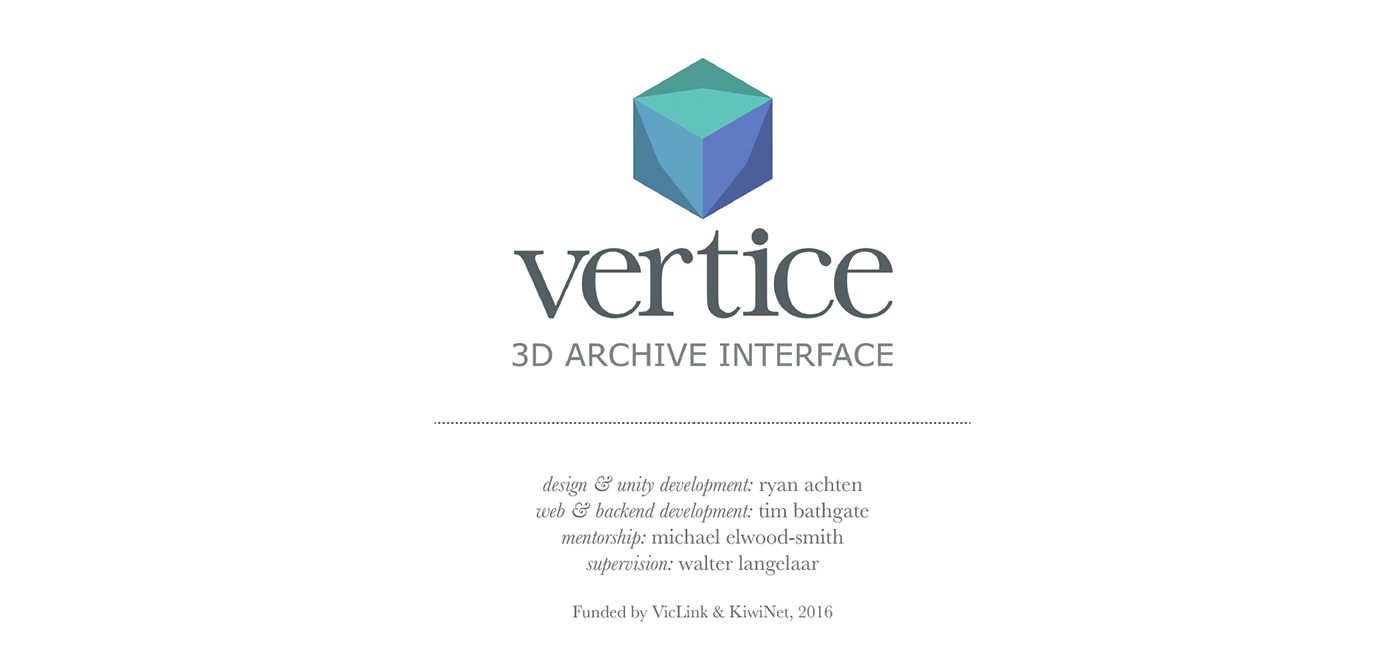
Vertice is a platform that enables cultural institutions and their visitors to collate and interact with digitised and born-digital 3D objects. Vertice was developed using the gaming engine Unity to provide functionality that supports the purposeful arrangement, contextualisation, and presentation of digital artefacts.
Through considered interaction design and incorporation of gamification, Vertice anticipates how three-dimensional space can alter and enhance the way users interact with intangible cultural artefacts.
Initially researched and developed as part of Ryan Achten’s MDI research (previously documented here) the software was identified and subsequently funded by Victoria University of Wellington’s commercialisation office, VicLink in 2016. The funding resulted in a WebGL build of the software, with improved metadata description and user interface. Completed in November, 2016.

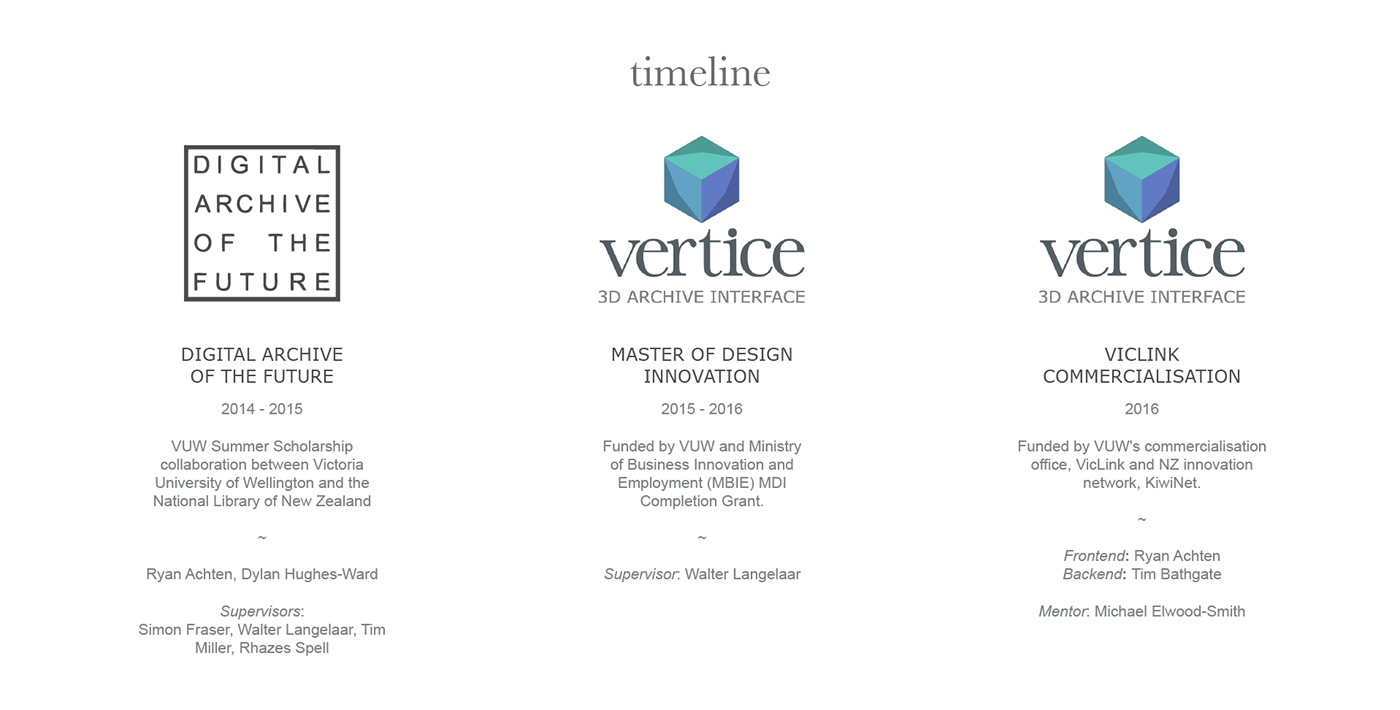
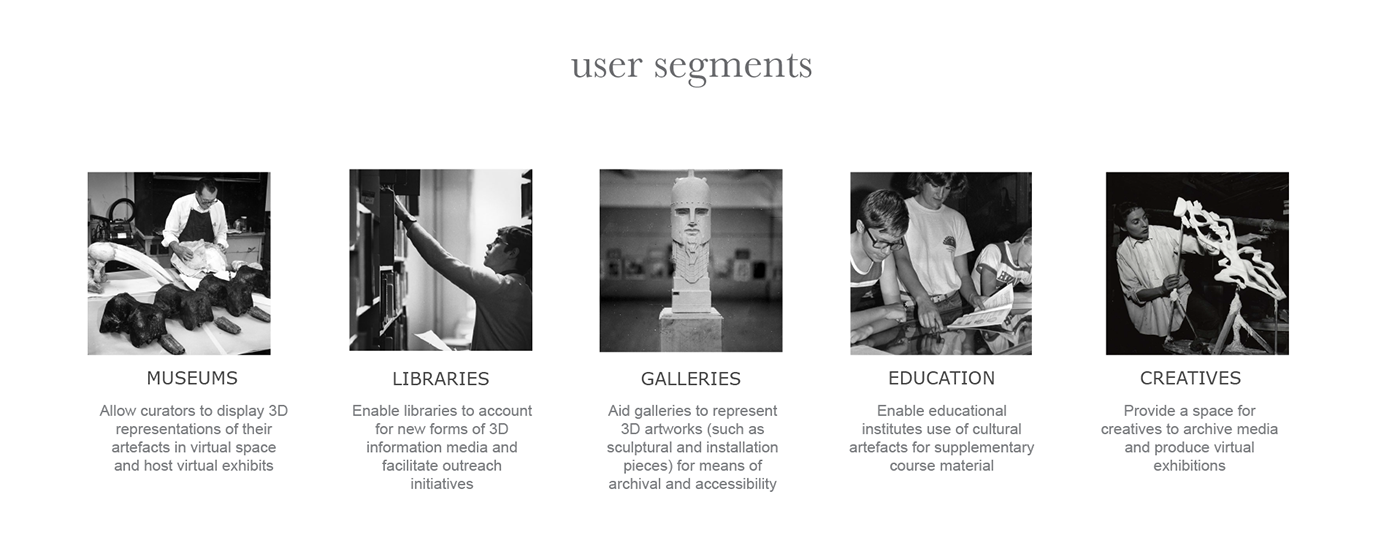


Initially, the system was intended to encompass the entire value chain, from digitisation to archival, by providing a built-in digitisation pipeline alongside either proprietary or open-source photogrammetry tools. While both open and proprietary versions of such a pipeline were partially developed, time and budgetary constraints prevented their integration with the wider system.
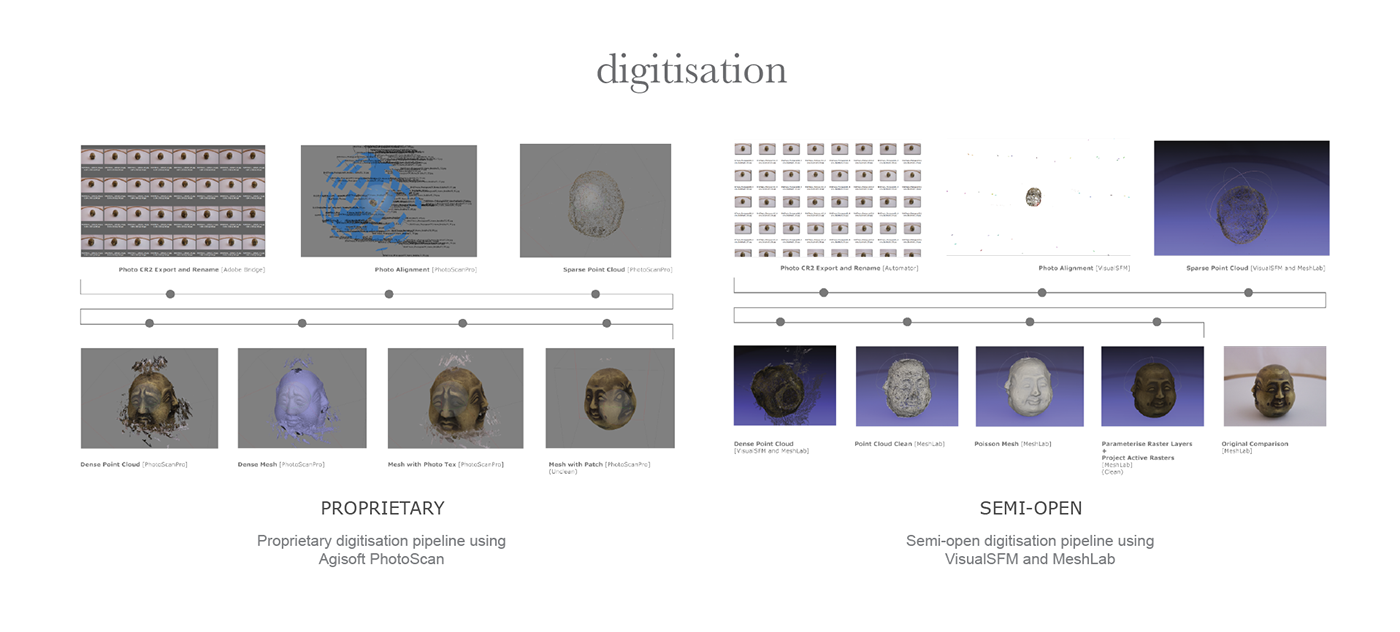
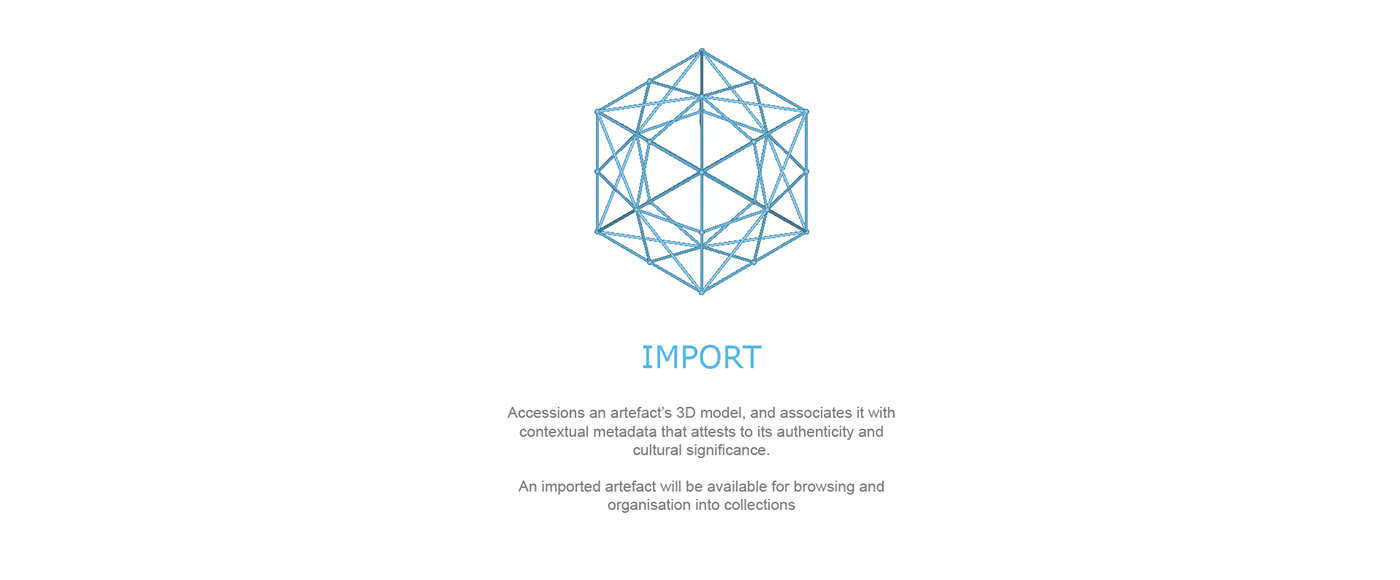
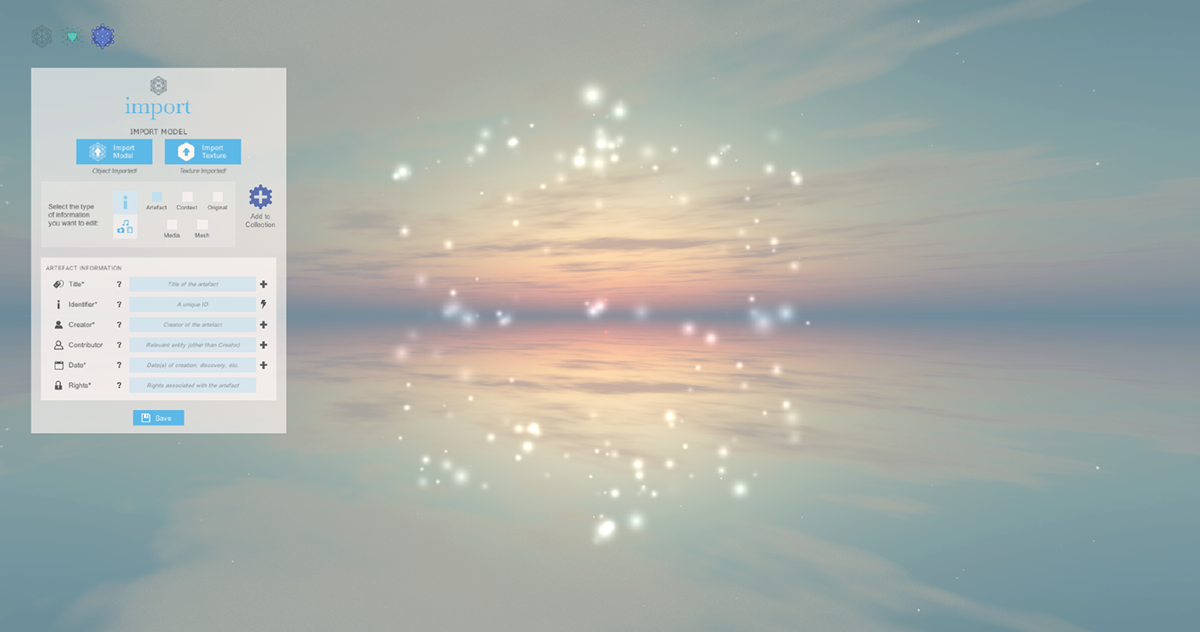
Empty Import scene on landing

A key aspect of this phase of research and development was designing and implementing a more effective means of describing 3D digital artefacts. While a number of precedents for achieving this were explored, the resulting approach leaned upon the Dublin Core Metadata Element Set, which was extended to encompass details specific to digital three-dimensional cultural artefacts.

Import scene once model and texture have been imported and metadata assigned using the GUI dialogue boxes


Dialogue box in the top left corner is used to pick a certain metadata attribute to browse, or for text-based searching
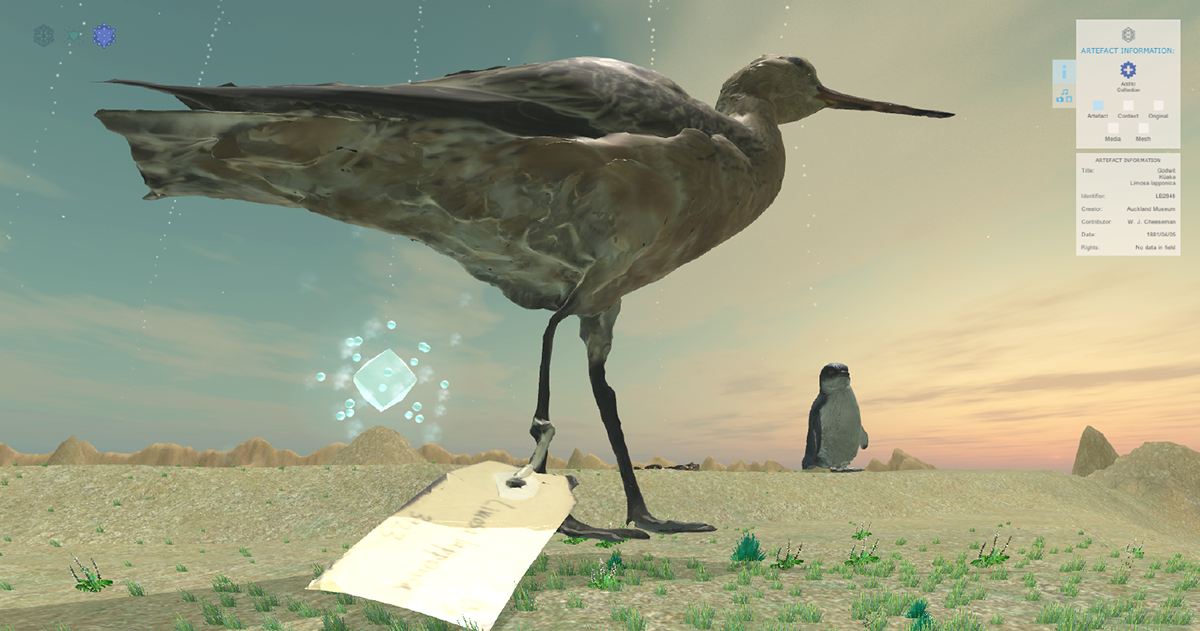
Upon approaching an artefact of interest, the user is presented with contextual information and media describing the artefact. The user can collapse or expand information accordingly. The user can also add the artefact to their own collection for later reference.
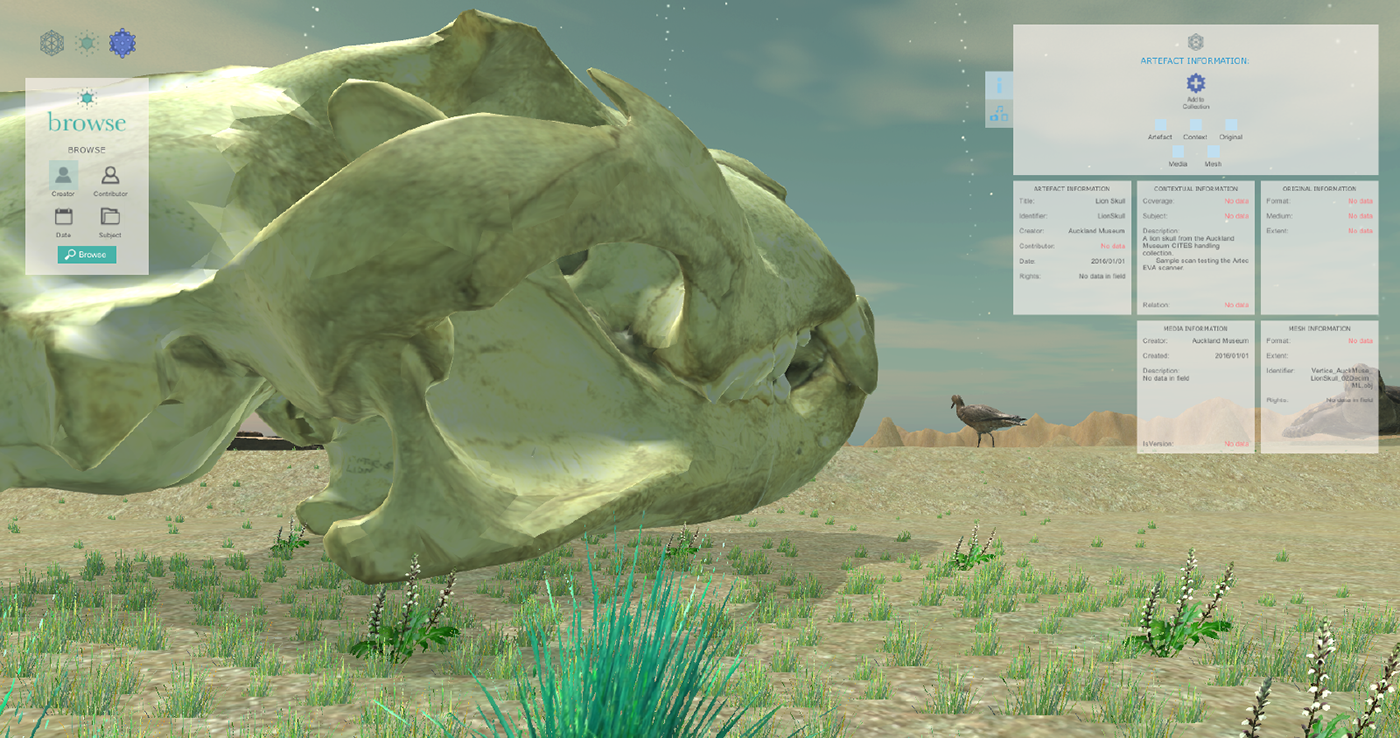

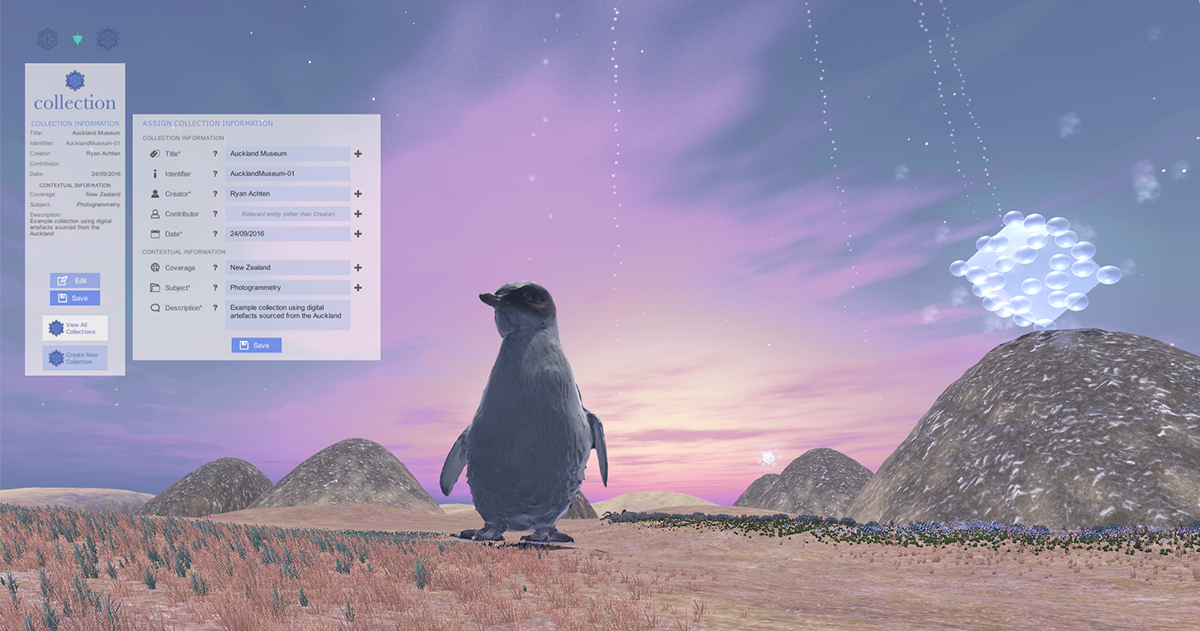
The Collection scene contains similarities in its interaction design to the Browse scene, where the user can move around in first person and approach artefacts. Each collection also contains its own metadata, housed in a similar approach to the artefact metadata schema

A key point of difference of the Collection scene is that it allows its users customisation for how artefacts are represented in their scene. Users can customise the scale, position and rotation of the artefacts in the collection without altering their depiction in the wider archive

